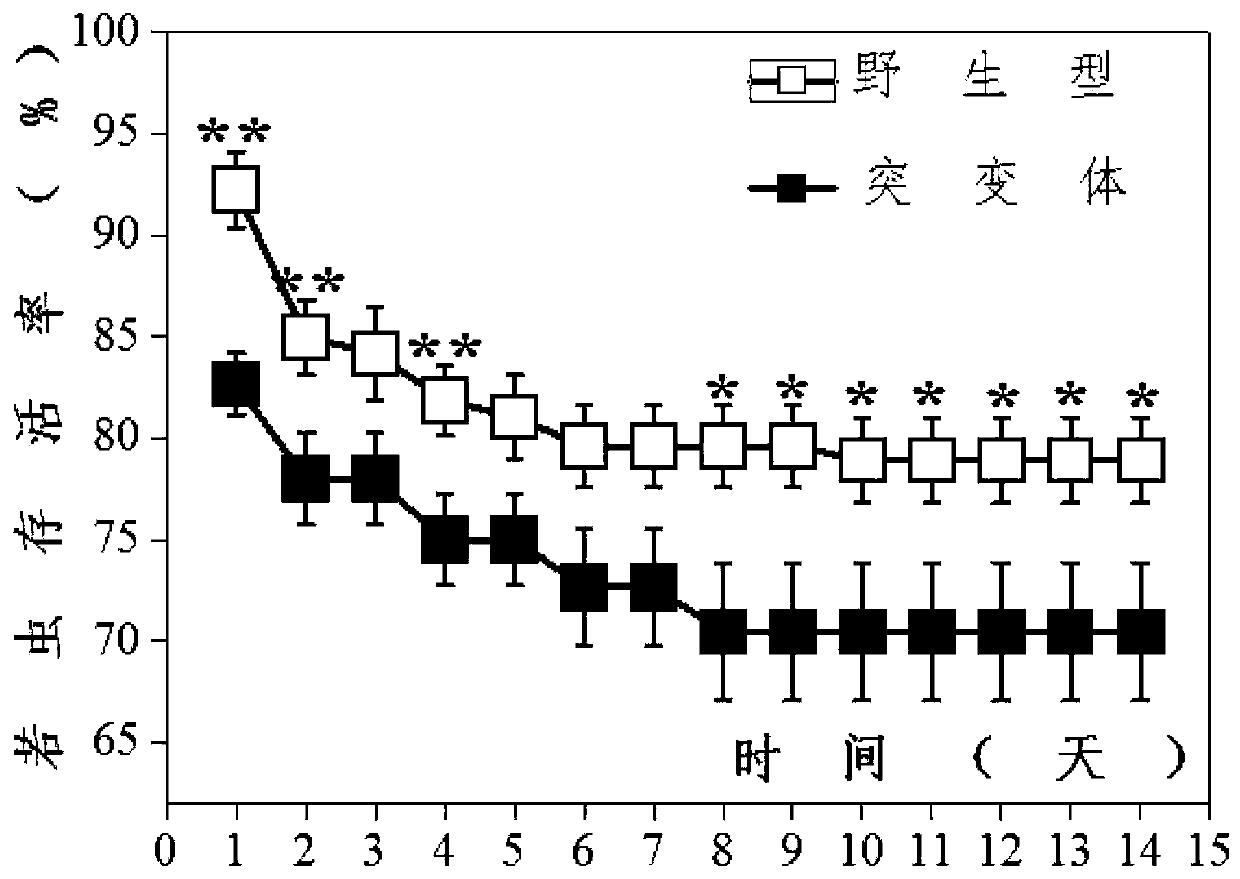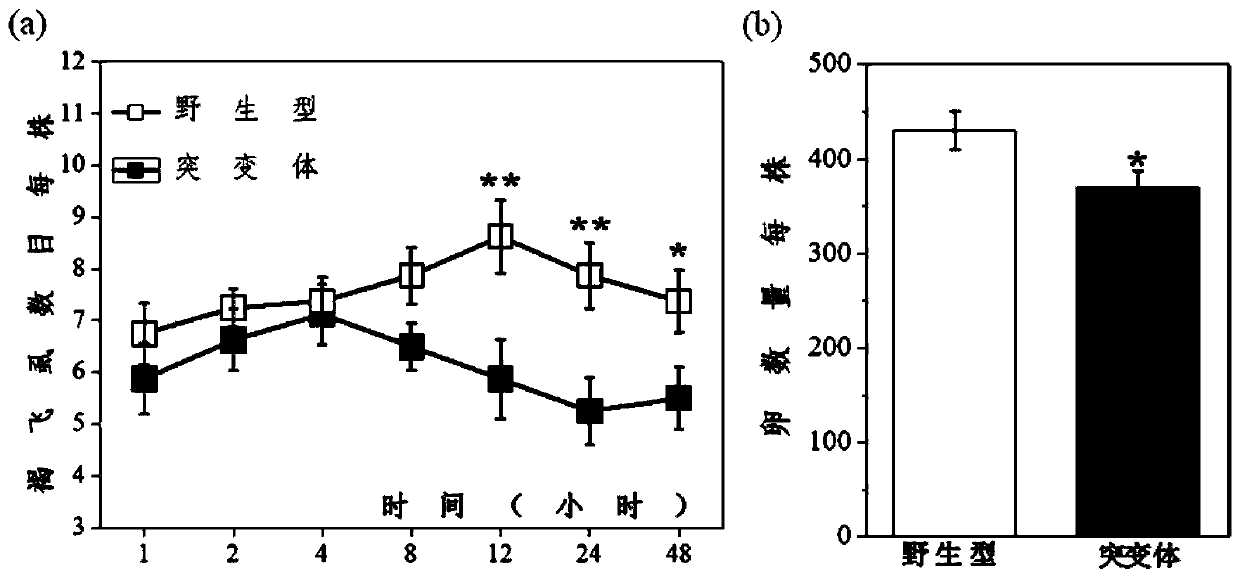Application of rice genes cyp71a1 and 5-HT in regulating insect resistance in rice plants
A CYP71A1, insect resistance technology, applied in application, genetic engineering, plant genetic improvement, etc., can solve the problem of unclear resistance mechanism, and achieve the effect of improving plant insect resistance and high insect resistance
- Summary
- Abstract
- Description
- Claims
- Application Information
AI Technical Summary
Problems solved by technology
Method used
Image
Examples
Embodiment 1
[0035] Embodiment 1 selectivity experiment
[0036] In this example, the rice mutant Jiazhe LM (Jiazhe lesion mimic) and the wild type Jiazhe B were used as materials for experiments; wherein, the mutant Jiazhe LM was obtained by using 350Gy 60 The wild-type rice Jiazhe B was obtained by Co irradiation mutagenesis; after detection, there was a G deletion in the gene CYP71A1 in the mutant genome.
[0037] 1. Resistance experiment of brown planthopper
[0038] a) Feeding selectivity and egg production: the wild-type rice and mutants were hydrocultured in the same culture container for the brown planthopper to feed freely (the results were as follows: figure 1 shown in a). The wild-type rice and the mutant were hydroponically cultured in the same culture container, and the stalks of the rice were surrounded by a gas-permeable glass cover (4 cm in diameter, 8 cm in height) (the two plants were in the same glass cover), and ventilated. 15 female brown planthoppers with eggs were...
Embodiment 2
[0054] Example 2 Effect of 5-hydroxytryptamine on insect resistance of rice
[0055] In order to explore whether the resistance of the mutants to N. lugens is related to the lack of 5-HT, the 5-HT content of rice materials known to carry resistance genes and BPH-sensitive materials was further determined.
[0056] The assay method of 5-hydroxytryptamine content in the plant body in the present embodiment is as follows:
[0057] (1) Sample pretreatment: Grind five grams of leaves, stems or root tissues in liquid nitrogen to powder, add 9mL of methanol, mix well at 10°C, shaker at 180rpm, fully extract for 30min, 13,500×g, 10°C After centrifuging for 15 minutes, 8 mL of supernatant can be drawn out, and 2 mL of distilled water is added according to the ratio of 1:4, and mixed. C18 SPE cartridges were activated with three bed volumes of methanol and rinsed with distilled water. Pass the water-added sample through the small column, and recover the effluent; then rinse it with 10...
Embodiment 3
[0068] In order to further verify the conclusions obtained in Example 1, we further used CRISPR technology to perform site-directed mutations on the gene CYP71A1 in the rice variety "Xindao No. 1" to obtain gene CYP71A1 silenced plants, namely rice plants CYP71A1-KO.
[0069] Specific steps are as follows:
[0070] According to the gene sequence, the target sequence was designed as 5'-TGGTCGCGTTGAGGAGGA GC-3', connected with the CRISPR vector pHun4c12, and transformed into Agrobacterium. After Agrobacterium-mediated transformation, T 0 Generation plants, mutants were discovered by sequencing. This results in the insertion of an "A" at 83 distances from the start codon, thereby forming a frameshift and causing a mutation. After breeding, the F1 generation was obtained and used for experiments.
[0071] The wild-type "Xindao No. 1" and the gene-silenced plant CYP71A1-KO were subjected to a feed selection experiment (the steps are the same as in Example 1). Depend on Figure...
PUM
 Login to View More
Login to View More Abstract
Description
Claims
Application Information
 Login to View More
Login to View More - R&D
- Intellectual Property
- Life Sciences
- Materials
- Tech Scout
- Unparalleled Data Quality
- Higher Quality Content
- 60% Fewer Hallucinations
Browse by: Latest US Patents, China's latest patents, Technical Efficacy Thesaurus, Application Domain, Technology Topic, Popular Technical Reports.
© 2025 PatSnap. All rights reserved.Legal|Privacy policy|Modern Slavery Act Transparency Statement|Sitemap|About US| Contact US: help@patsnap.com



